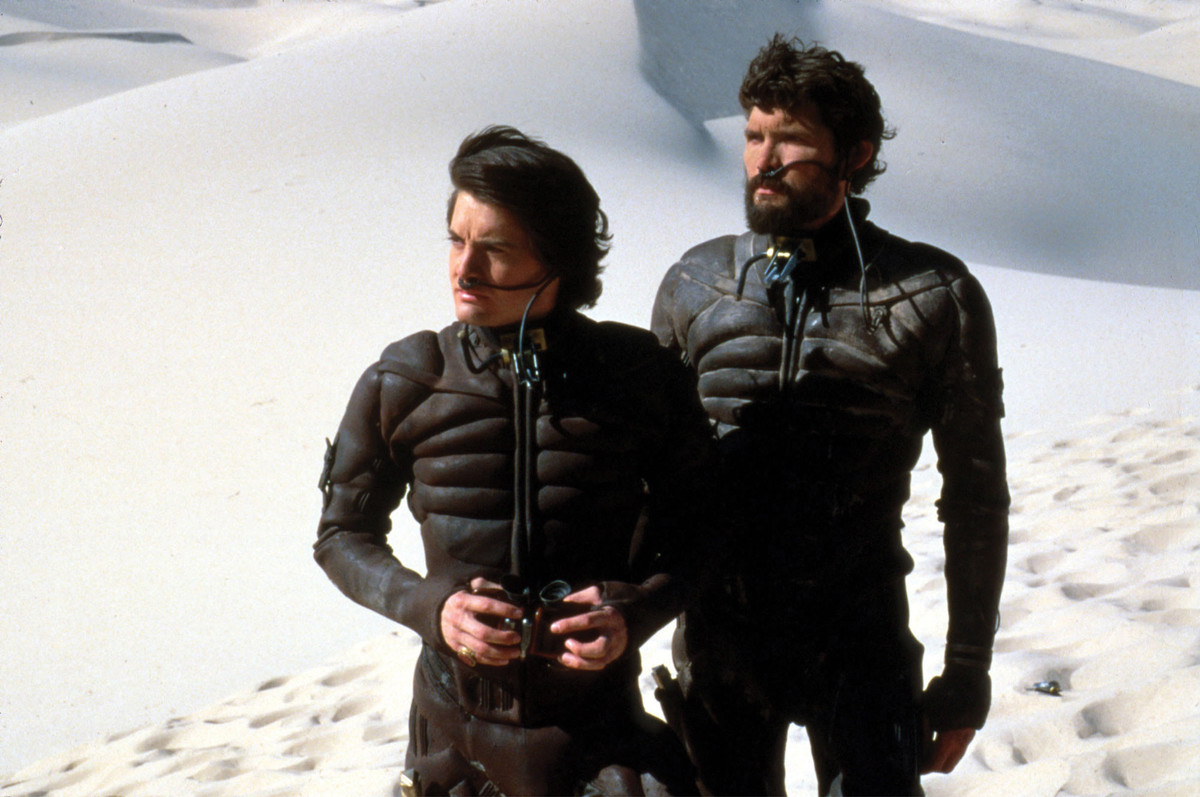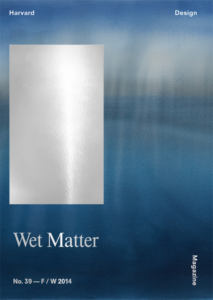
Body Boundaries
In Dune, science fiction writer Frank Herbert imagines a bodysuit designed to preserve the body’s moisture on the desert planet Arrakis. Herbert’s “stillsuit” turns bodily fluids into potable water, consumed through a tube attached to the neck: “With a [stillsuit] in good working order, you won’t lose more than a thimbleful of moisture a day.”
To survive under water, humans require the minimum infrastructure of an aqualung and a wetsuit. The latter, invented by physicist Hugh Bradner in the early 1950s, provides thermal insulation, abrasion resistance, and buoyancy through bubbles of gas enclosed within a neoprene lining. It allows one to enter an environment suboptimal for human occupation: the cold and compressive world of oceans. Though protected, a wetsuited person retains contact with the wet environment through a thin layer of water maintained between the body and the suit.
These two post-terrestrial outfits function as mediators—forms of adaptation—between humans and water. Like umbrellas, rubber boots, and sea walls, they speak of our complicated relationship to aqueous ecologies: we are as dependent on water as we are on the technologies that seal us from it. In her book Alongside the Right to Water, posthumanist researcher Astrida Neimanis writes of “an ecology in which humans and other bodies of water (animal, vegetable, meteorological, geophysical) are always already implicated, as lively agents, in one another’s well-being.” Furthermore, geologists Dianna and Mark McMenamin suggest that we are reservoirs of the “hypersea,” connected aquatic environments. They imagine terrestrial organisms to be bonded by the fact that their body fluids commingle and that this connectedness forms a sea through which other organisms and nutrients can move.
Before atoms and bacteria were discovered, the concept of the body was understood as a system in which different humors existed in a state of relative equilibrium. Made up of earth (black bile), air (blood), fire (yellow bile), and water (phlegm), we were an element among the rest—an element in fusion. This idea went hand-in-hand with a belief that the body was porous and subject to penetration by the surrounding elements. Unlike a Cartesian body with well-defined boundaries, bodies were permeable down to their most intimate recesses. Bathing was used to restore balances.
Today, as the lines between the Internet and the ocean begin to blur, one may lose the feeling of a body boundary at the borderlands of material and virtual worlds. Submarine cables and data clouds provide a landscape for cyber-utopian, water-inspired online culture (#seapunk #slimepunk #icepunk). In the world of so-called virtual water—where we rely on a watery substrate that, among other things, keeps our screens lit up and wetsuits on the market—we wear a tail and fins.
Jenna Sutela is a writer and artist based in Helsinki.
